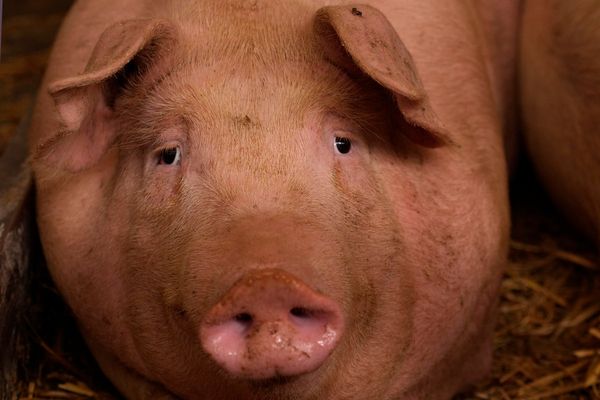
When it comes to the best type of yoga, Hatha yoga is up there. Not only is it rumoured to be loved by celebrities like Jennifer Aniston and Halle Berry, but it's packed with all the benefits of yoga, including mental and physical perks.
Don't believe us (or Jen An, for that matter)? Let's look at the science. A 2016 study from the Journal of Evidence-Based Medicine reported that people with elevated anxiety benefited from a Hatha yoga practice to improve their mental health, while a 2019 paper reported that Hatha yoga was as good as traditional therapeutic exercises to improve back pain. (Our guide to yoga for lower back pain, at the ready).
It's not too intense though, which is why Hatha is a brilliant form of yoga for beginners. What separates it from other styles of yoga is that unlike practices like yin, which are more meditation based, you'll be flowing through poses, but it won't feel too fast or intense like Ashtanga yoga. Sound perfect? Keep scrolling as a qualified pro shares everything you need to know.
Don't miss our guides to yoga poses, yoga for flexibility and yoga for beginners, while you're here.
Hatha yoga: your guide
What is Hatha yoga?
Wondering what exactly Hatha yoga is so you can reap those benefits pronto? Let Laura Pearce, senior yoga and breathwork teacher and founder of Yoga Collective London, explain. "Hatha Yoga describes all practices of physical yoga. Most modern forms of yoga today have evolved from traditional Hatha - some have become more dynamic and some of the key philosophical tenets are somewhat different but they all have elements of this classical form of yoga," she shares.
Because Hatha combines gentle movement with the other elements of yoga, including breathwork and mindfulness, it's a great way to learn more about the practice.
"Hatha is a great introduction to yoga in my opinion," she goes on. "Not just because it’s a little less physically demanding than other types of yoga, but because it introduces you to more holistic elements of the practice that we tend to lose sight of in the West. I think it’s a great way to honour the traditional sanctity of the Yoga practice."
What are the benefits of Hatha yoga?
1. It builds strength
There are loads of physical benefits of Hatha yoga, largely because during the practice, you'll have to hold your body upright in lots of different positions. That's why, in this study, researchers found that just 21 days of Hatha yoga training improved both core strength and balance.
2. It improves flexibility
Because movement is one of the foundations of Hatha yoga, it's been proven to boost your flexibility and mobility. A 2015 paper from the Journal of Physical Therapy Science found that 90 minutes of Hatha yoga done once a week improved the flexibility of women's spines and hamstrings, which is brilliant news for anyone wanting to improve muscle and joint health.
3. It boosts mental health
Hatha yoga is brilliant for your mental health. Not only can it reduce anxiety, as shown in the 2016 study mentioned above, but a Journal of Nursing Research paper reported that a single 90-minute session of Hatha yoga can reduce stress, and doing it on a regular basis helped keep long-term stress at bay. Impressive.
How to do Hatha yoga
The best way to do Hatha yoga, according to our experts, is to try a class or follow along with a video, as there's a structure to a Hatha yoga class that means you can't just do the stretches and be done.
"The format of Hatha yoga is usually pretty consistent across different studios and teachers, unlike most other yoga styles which can vary wildly depending on where you take your class," adds Pearce.
Still, if you want to practice some of the elements before your class, you can follow this structure and some of the below poses.
1. Pranayama
What? Every Hatha yoga class begins with pranayama, which is a form of breathing exercise to help you control your vital life energy which is the breath.
How long? Aim for 45 seconds to a minute. Rest and repeat.
2. Sun salutations
What? "Sun salutations are a sequence of twelve postures that flow in coordination with the breath and serve as a warm-up to the practice," says Pearce.
How long? This sequence is thirteen minutes long, but even a couple of minutes can be effective.
3. Standing poses
What? "What follows in Hatha yoga is twelve core posture groups with variations from standing to seating then kneeling and lying down, some also involving twists," explains Pearce. "These poses are performed in this order to awaken different chakra points in the body."
The standing pose, for example, is great for grounding.
How long? Aim for 45 seconds to a minute.
4. Seated poses
What? Seated poses not only promise to ground and centre your energy but will provide a juicy hip opener, too. Half Lotus was our expert's go-to.
How long? Aim for 45 seconds to a minute.
5. Kneeling poses
What? Sore back or stiff neck? Kneeling poses like cat-cow are ideal for easing tension and providing your shoulders, back and neck with a much-needed stretch.
How long? Aim for 45 seconds to a minute.
6. Lying poses
What? Lying poses are one of the best types of yoga for relaxing both mind and body. Cobra pose in particular promises to strengthen your back and open your chest and shoulders.
How long? Aim for 45 seconds to a minute.
7. Shoulder stand
What? "The peak poses at the end of class tend to be headstand and shoulder stand, seen as the king and queen of Asana (poses) respectively," says Pearce.
How long? Remember this is an advanced yoga move but if you are comfortable and capable of doing it and have done so before under the guidance of a qualified pro, aim for 45 seconds to a minute.
8. Savasana
What? "As with all yoga practices, a hatha class closes with savasana pose - a deep relaxation in which you lie flat on your back in stillness for at least a few moments, which is considered a way to integrate the practice, and reset the body and mind," says Pearce.
How long? As long as you like - anything from 45 seconds will close your practice nicely.
Shop our go-to yoga kit now:
One of Health Editor Ally Head's go-to bra's, Adanola designs are simple, stylish and supportive, not to mention won't break the bank.
Made from sustainably harvested natural tree rubber, this Yogamatter yoga mat is perfect for both gentle and more dynamic stretches. It offers plenty of grip and a comfy place to find your inner Zen.
How is Hatha yoga different from regular yoga?
Good question. While there are many different types of yoga - from yin, to Iyengar, to Ashtanga - Hatha is a slower, more meditative form of the practice.
There's a specific focus on your breath and tuning in to both your body and mind. Think slow, controlled movements, plenty of stretching, and even more mental benefits, too.







